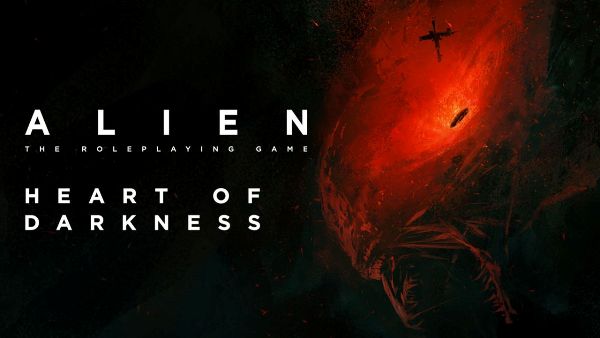Borrowing Parts: Related Borrowing
By The Warden
 Before picking up where we left off, let’s talk about inspiration for a bit. Writing is all about working with inspiration and drawing from the works of your predecessors. Not matter how much you try, something typed onto the computer will be influenced by books you’ve read, games you’ve played, and systems you adore. Even your choice of words will be based on inspiration, such as authors of choice, learned teaching styles or education level. What I’m trying to say is that there’s no way you can avoid inspiration in any of your work.
Before picking up where we left off, let’s talk about inspiration for a bit. Writing is all about working with inspiration and drawing from the works of your predecessors. Not matter how much you try, something typed onto the computer will be influenced by books you’ve read, games you’ve played, and systems you adore. Even your choice of words will be based on inspiration, such as authors of choice, learned teaching styles or education level. What I’m trying to say is that there’s no way you can avoid inspiration in any of your work.
For the second part of this month’s series on system inspiration, Borrowing Parts, you’re in luck because it embraces inspiration. Related borrowing is a term I prefer for games and systems built with influence and tribute to other games and systems before it. While there are many who actively attempt to avoid such influences (and we’ll get into that for next week’s article on the lone gunman style of borrowing), many designers are rather blunt about where their ideas originated. It can vary from the direct (“it’s part Fate, part 13th Age with a dash of Ticket To Ride for flavor”) to indirect (using hit points to track damage or weapon breaking rules) and no matter how it’s done, the goal of related borrowing in game design is to provide a fine balance between familiar mechanics and innovation.
Assume you’re listening to a podcast with a game designer plugging her current Kickstarter drive for a new co-operative storytelling RPG about school children fighting monsters after class. “It’s a combination of Dungeon World, Call of Cthulhu, and School Daze. Players take turns setting out the particulars of the story using descriptions, which work very much like moves from DW, and have to keep their Fear in check if they’re going to make it to the monster of the week and survive. The higher their Fear score, the more penalties they take whenever they roll dice for a discovery.” This is the quintessential example of related borrowing: the system is completely unique in its own way with a little help from some other systems.
For the purposes of today’s discussion, let’s simply assume all games use indirect related borrowing. The entire premise of your average roleplaying game is built around fundamentals set down nearly forty years ago and have gone on to shape modern video gaming and interactive media for generations to come. It’s been dealt with and addressed numerous times on various blogs and, as we addressed in the opening paragraph, happens with everything in entertainment. These are the pieces of the game design puzzle we all use in our work: task resolution, target numbers, successful outcomes and failing complications, character classes, plus many more we probably take for granted.
Related borrowing, as it’s intended for this discussion, deals with direct and intentional references and duplications of features and mechanics pulled directly from another game. Hindrances from Savage Worlds, escalation dice from 13th Age, and magic item creation from D&D can all provide inspiration for a designer working on her new system. Copying these elements and inserting them into a new system – with a few minor tweaks and adjustments to prevent the game from crashing midway through – is what we’re here for today. These are cases of clear and obvious cases of mechanical copying. Why? Because that mechanic has already been perfected in another game.
SAY IT LOUD, SAY IT PROUD
Such a practise would normally be considered tactless and outright theft, but there are two reasons permitting such actions. First, there’s no legal ramifications preventing such borrowing. Game mechanics cannot be copyrighted (and it’s a good thing or else no other game would be allowed to use dice rolls for movement outside of Monopoly). That’s why publishers trademark the name of their system, but none of the pieces inside.
Second, everything that came before that game was drawn from the work of another game, even if it was a lone gunman who burned every book in his house during the design process. It’s a fact, so why try and hide it? Embracing such borrowing demonstrates a familiarity with the roleplaying community and marketplace and it’s also a shorthand term for promoting and explaining the values of your game. If you want to design your own horror game with an emphasis on dread and fear, accepting the popularity of the Sanity mechanic from Call of Cthulhu can work out in your favour. Trying to create a different fear mechanic instantly means you are trying to compete with one of the most popular and well-regarded methods of tracking and handling the effects of horrific depravity today. Borrowing Sanity from the Dark Lord accepts the status quo and allows familiar players to cut straight to the chase. They already understand how your version of Sanity is expected to work and they only need to learn the differences instead of learning completely from scratch.
Finally, the designers and publishers of the previous game are thrilled to see their work inspiring others to take what they’ve done and run with it. Perhaps not as much as it may be with licensed borrowing, seeing as the licensed type of tribute typically means your logo is slapped on someone else’s cover, but it’s a nice second place to having nothing at all. Most of this association will be made during a new game’s promotional tour as the lead designer discusses the use of Earthdawn‘s step mechanic on a podcast; it’s rare for any finished product to specifically tout their connections to some of the public’s most popular games.
Let’s be clear: borrowing rules and components is not the same as cloning them. The Sanity mechanic only works in a game where Sanity places a major role in character outcomes, much like hit points in combat games. Using it in a dungeon crawling horror game will require modifications, but the fact remains that the mere use of anything resembling the original Sanity tool still counts as borrowing. Many publishers produce alternate versions of their own mechanics to suit individual settings and genres; why can’t you?
WHEN IS IT ORIGINAL?
And so we come to the ultimate question. When is a borrowed mechanic varied enough to be considered original? Personally speaking, when you have no idea it ever existed. So long as you knowingly use inspiration in your creation, it’s borrowing. If your internal dialogue says something like, “I really enjoy how Game X handles weapon damage, but how do I make that work in mine?” then you’re borrowing. Sorry.
Which leads us up to the final segment of this three-part series. In next week’s conclusion, we’ll look at the rarest of all game design: the lone gunman.


